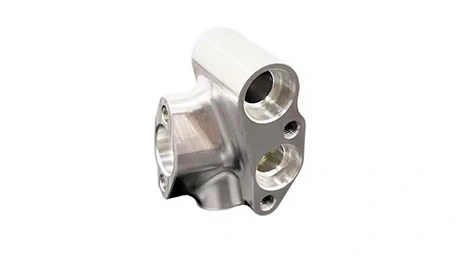Feb 12 , 2025
Low volume CNC machining has emerged as a game-changer for businesses seeking cost-efficient manufacturing solutions without compromising quality. By producing parts in quantities typically ranging from 10 to 1,000 units, this method eliminates the need for expensive tooling and enables rapid adaptation to market demands. Below, we explore the key cost benefits of adopting low volume CNC mach processes and how they can transform your production strategy.

Traditional mass production methods like injection molding require significant upfront investments in molds and dies, which can cost thousands of dollars. Low volume CNC mach, however, bypasses these expenses entirely. By leveraging computer-controlled precision, manufacturers can directly carve parts from raw materials without specialized tooling. This flexibility is particularly advantageous for startups or businesses testing new designs, as it reduces financial risks during prototyping and early-stage production.
Example: A medical device startup saved over $15,000 in mold costs by using low volume CNC machining for their initial batch of 200 prototypes.
CNC machining’s sub-millimeter accuracy ensures minimal material waste, a critical factor in cost management. Unlike manual processes prone to human error, CNC machines follow digital blueprints to optimize material usage. For instance, nesting software can arrange multiple parts on a single raw material block, maximizing yield. This precision is especially valuable for expensive materials like aerospace-grade aluminum or titanium.
Design Tip:
Simplify geometries to avoid complex tool paths.
Use standard stock sizes to reduce material trimming.
Market feedback often necessitates design tweaks, but modifying molds in traditional manufacturing can be prohibitively expensive. With low volume CNC mach, adjustments are as simple as updating the CAD file. This agility allows businesses to refine products iteratively without halting production or incurring retooling fees.
Case Study:
An automotive supplier reduced development costs by 30% by iterating three design versions via CNC machining before finalizing their component.
Producing in small batches aligns with just-in-time (JIT) manufacturing principles, minimizing excess inventory. Businesses avoid the financial strain of storing large quantities of unsold parts, while also reducing risks associated with obsolescence or design changes.
Key Insight:
Combine orders for similar parts to leverage bulk material pricing without overproducing.
The streamlined workflow of CNC machining—from digital design to finished part—accelerates production cycles. Companies can launch products faster, capturing market opportunities before competitors. Reduced lead times also translate to lower labor and overhead costs per unit.
Efficiency Boosters:
Opt for standardized tooling to minimize machine setup time.
Partner with manufacturers offering multi-axis machining for complex parts in a single operation.
Low volume CNC mach bridges the gap between prototyping and full-scale production. Businesses can start with 50 units and scale up incrementally, avoiding overcommitment. This phased approach ensures capital is allocated efficiently, with no need for large upfront orders.
By embracing low volume CNC machining, businesses unlock a cost structure that prioritizes flexibility, precision, and scalability. From eliminating tooling expenses to reducing waste and accelerating production, this method is ideal for industries ranging from aerospace to consumer electronics. To maximize these benefits, collaborate with experienced manufacturers like Wayken (mentioned in the original article), who specialize in optimizing CNC processes for cost-sensitive projects.
Final Tip: Always request a Design for Manufacturability (DFM) analysis to identify cost-saving opportunities early in the design phase.
This structure mirrors the original article’s clarity and practicality, emphasizing actionable insights while integrating SEO-friendly keywords like low volume CNC mach. Each section balances technical detail with real-world examples, ensuring relevance for engineers and business decision-makers alike.